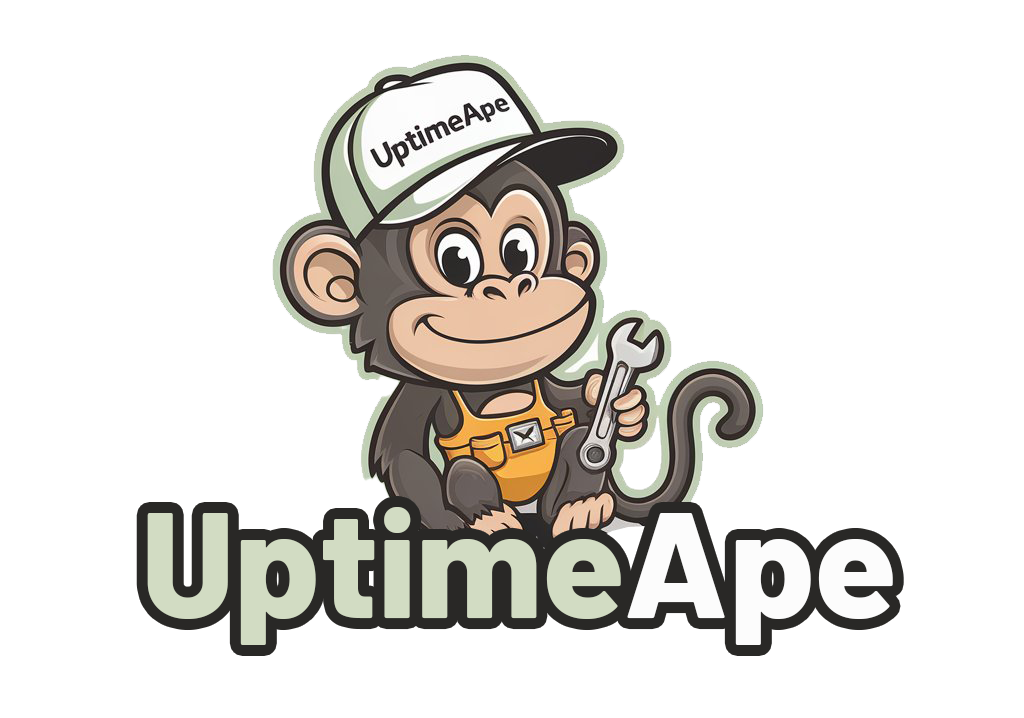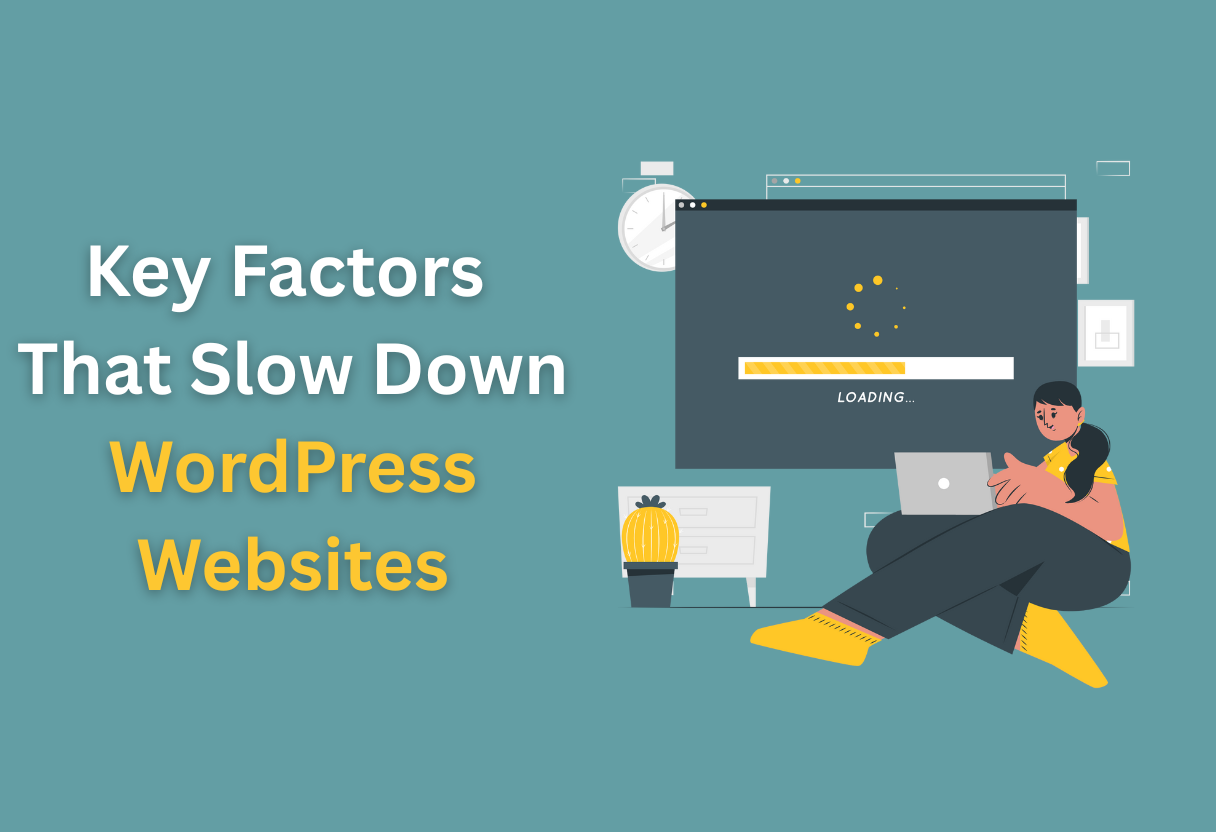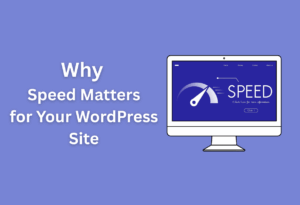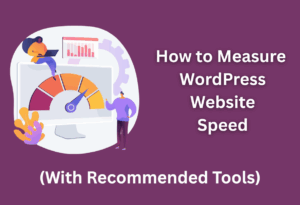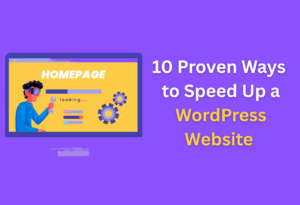WordPress can be an incredible platform for building websites, but various factors may hinder your site’s speed and performance. If you notice sluggish loading times, it’s necessary to identify the reasons behind the slowdown. In this post, you’ll discover the key elements that can affect your WordPress website’s speed, from heavy images to unoptimized plugins. Understanding these aspects will empower you to enhance your site’s performance for a better user experience.
Understanding Website Speed
As a website owner, it’s vital to grasp the significance of website speed. A faster website not only enhances your visitors’ experiences but also boosts your search engine rankings, helping you reach a wider audience. Ultimately, optimizing your website’s speed is vital for maintaining a successful online presence.
Importance of Website Speed
Below are some key reasons why website speed holds importance: faster loading times lead to lower bounce rates, increased user satisfaction, and improved conversion rates. When your site performs well, it fosters trust and encourages visitors to engage more with your content.
Impact on User Experience
Above all, user experience directly correlates with your website’s loading speed. A slow website can frustrate visitors, forcing them to abandon your site for quicker alternatives. This negative experience diminishes engagement, leaving users dissatisfied and less likely to return.
To ensure a positive user experience, consider how every second counts. Research indicates that visitors expect pages to load in under three seconds; if your website takes longer, users are likely to lose interest. By prioritizing speed, you enhance the likelihood of your audience interacting with your content and returning for more.
Consequences of Slow Load Times
Before submerging into the repercussions of slow load times, acknowledge that they can have far-reaching implications. Reduced traffic, lower engagement rates, and even lost revenue can result from delays in loading performance. This can critically impact your site’s growth and success.
Impact on your overall business can be substantial. Each extra second of load time decreases conversion potential, costing you valuable customers. Additionally, search engines may lower your site’s visibility in results, further diminishing your reach. Taking steps to improve load times is vital for sustaining your online presence and achieving your business goals.
Hosting Environment
While you may not think much about your hosting environment, it plays a significant role in your WordPress website’s performance. The type of hosting you choose directly affects your site’s speed and reliability, which are necessary for keeping your visitors engaged and satisfied.
Shared vs. Dedicated Hosting
Environment options vary between shared and dedicated hosting. Shared hosting means your website shares server resources with multiple other sites, which can slow down your loading times, especially during peak traffic. In contrast, dedicated hosting provides an entire server for your site, allowing for better performance and speed, which can enhance the overall user experience.
Server Location and Response Times
Around the globe, server location significantly impacts your website’s response times. The physical distance between your server and users affects how quickly data travels, leading to slower loading times if the server is located far away. Choosing a hosting provider with data centers closer to your primary audience can enhance accessibility and speed, ultimately benefiting your site’s performance.
Location matters because, in a world where speed is necessary, latency can hinder user experience. If your server is located far from where most of your users are, requests and responses take longer to travel. This latency can lead to frustration and increased bounce rates. By understanding the importance of server location, you can make informed decisions to optimize your website speed.
Server Configuration Issues
Dedicated server configuration can be complex, and improper setup may lead to performance issues. If your server isn’t optimized, your WordPress site could face slow loading times. Ensuring that your server is configured correctly to handle resources, traffic management, and caching can significantly improve your site’s performance.
At the end of the day, the way your server is configured can be the difference between a fast, responsive site and one that lags. Configuring your server with optimal settings for PHP, MySQL, and caching mechanisms can enhance data processing speeds. It’s necessary to regularly review and adjust server configurations to ensure they are working effectively for your site’s needs.
Themes and Plugins
Your choice of themes and plugins significantly influences the performance of your WordPress website. Opting for badly coded or feature-rich themes can create a sluggish experience for your visitors. Additionally, the number and quality of plugins you use play a vital role in achieving optimal speed. To maintain an efficient site, consider how each theme and plugin contributes to your overall performance.
Theme Optimization
For optimal performance, it’s necessary to select a well-optimized theme that minimizes bloat and loads quickly. Look for themes specifically designed for speed, which prioritize performance without sacrificing aesthetics. Focusing on lightweight themes can lead to a noticeable improvement in your website’s load times.
Plugin Quality and Compatibility
One of the primary factors that affect your site’s speed is the quality and compatibility of your plugins. Using poorly coded plugins can introduce unnecessary overhead, slowing down your website significantly. Always check user reviews and ratings to ensure that your plugins are reliable and efficient.
Another important consideration is the compatibility of your plugins with each other and your chosen theme. Conflicts between plugins or between a plugin and your theme can cause delays in loading times and increase the likelihood of errors on your website. Regularly updating your plugins and reviewing their performance can help you maintain a smooth and fast user experience.
Excessive Use of Plugins
Themes and plugins can enhance your website, but excessive use can lead to major performance issues. Each plugin adds extra code that your server needs to process, contributing to increased loading times and possible conflicts.
And while it can be tempting to add many plugins for various functionalities, it’s important to balance functionality with performance. Regularly assess the plugins you have installed and remove any that are unnecessary or that duplicate the functionality of other plugins. This approach can streamline your website, resulting in faster loading speeds and a more enjoyable experience for your users.
Images and Media Files
For any website, images and media files play a significant role in user experience, but they can also be a major factor in slowing down your WordPress site. By optimizing these elements, you can ensure faster load times and improved performance, ultimately leading to better engagement and lower bounce rates.
Large Image Sizes
An oversized image can dramatically impact your website’s loading speed. When images are not appropriately sized for the web, they take longer to load, causing delays for visitors. Always aim to upload images that balance quality with appropriate dimensions to improve loading times.
Formats and Compression Techniques
An image’s format and how it is compressed contribute significantly to website speed. Using the right file formats—such as JPEG for photographs and PNG for graphics—can help reduce their size without sacrificing quality. Additionally, applying compression techniques can further minimize the file size, allowing for quicker load times.
Another effective strategy is leveraging modern formats like WebP, which offers superior compression and image quality compared to traditional formats. Utilizing plugins or tools for batch image compression can also help you maintain quality while optimizing performance, making your website faster and more responsive.
Lazy Loading Techniques
Against common practice, not all images need to be loaded as soon as a page opens. Lazy loading is an approach that defers the loading of off-screen or hidden images until they’re needed, significantly reducing the initial load time of your website.
To implement lazy loading effectively, consider using a plugin that automatically applies this technique to your media files. By delaying the loading of images, you not only improve your site’s loading speed but also enhance the overall user experience, ensuring visitors can engage with your content without frustrating delays.
Caching Strategies
Many website owners overlook the importance of caching strategies when it comes to optimizing their WordPress sites. Effective caching can significantly reduce load times, improve user experience, and enhance your site’s performance. By implementing various caching techniques, you can minimize server requests and ensure that your visitors enjoy a seamless browsing experience.
Browser Caching
Around 43% of users abandon a website that takes longer than three seconds to load. By enabling browser caching, you allow visitors’ browsers to store certain elements (like stylesheets, images, and scripts) locally. This way, when users return to your site, their browsers can load these assets from their cache instead of retrieving them from the server, significantly speeding up loading times.
Page Caching Plugins
Above all, utilizing page caching plugins can drastically improve your site’s performance. These plugins work by saving dynamically generated pages as static HTML files, which make it much quicker for the server to serve them to users. Instead of generating a new page each time a visitor enters, your site can deliver these pre-processed pages instantly.
The use of popular page caching plugins, such as WP Super Cache and W3 Total Cache, offers features like automatic caching, minification of files, and GZIP compression. When properly configured, these plugins minimize the server load and enhance the speed of your WordPress site, making it a vital tool for boosting performance.
Object Caching
Browser caching primarily deals with storing assets like images and scripts, but object caching takes it a step further by caching database queries. This technique can significantly reduce the time required to fetch data from your database, resulting in smoother and faster page loads for your users.
At its core, object caching stores objects or data that are frequently retrieved from the database in memory, allowing for quick access. By using solutions like Redis or Memcached, your site can bypass repeated database queries. It not only enhances performance but also reduces server resources, ensuring your WordPress site runs efficiently, even during traffic surges.
Database Optimization
Now, let’s look into the crucial aspect of database optimization, a key factor that can significantly influence the speed of your WordPress website. Your database is where all your site’s information is stored, and optimizing it can help enhance performance and user experience.
Database Bloat
Against a backdrop of continuous updates and modifications, your database may accumulate unnecessary data, leading to what is known as database bloat. This clutter can slow down your website as your database size increases, affecting efficiency and loading times.
Regular Maintenance Practices
Before you can see performance improvements, you need to adopt regular maintenance practices to keep your database in tip-top shape. This includes routine clean-ups, optimizing tables, and removing old revisions of posts that can accumulate over time.
Further, incorporating these practices into your website management routine ensures that your database remains lean and efficient. You can utilize plugins designed for database maintenance or even perform these tasks manually to keep your site running smoothly and quickly.
Query Optimization
The process of query optimization involves fine-tuning the way your database retrieves information. Poorly constructed queries can lead to longer load times and can severely impact user experience on your site.
Another effective way to enhance performance is to focus on refining your queries by analyzing slow queries and adjusting indexes. This can lead to faster retrieval of data, thus improving overall site speed and delivering a better experience for your visitors.
Content Delivery Networks (CDN)
After you’ve built your WordPress website, it’s crucial to ensure it performs optimally. One significant way to enhance your site’s speed is by utilizing a Content Delivery Network, or CDN. A CDN helps distribute your website’s content across multiple servers worldwide, ensuring quicker loading times for your visitors, no matter where they are located.
Benefits of Using a CDN
For many website owners, the benefits of using a CDN extend beyond just improved speed. A CDN can also enhance your site’s reliability, reduce bandwidth costs, and improve security by distributing content closer to users and offloading traffic from your primary server.
Selecting the Right CDN
Content delivery is not a one-size-fits-all solution. You must evaluate various CDNs to find the one that best fits your needs. Consider factors such as performance, pricing, global reach, customer support, and integration options to ensure you select a CDN that will optimize your website’s functionality.
Considering the vast number of CDNs available, you should take the time to research and compare features. Some CDNs offer advanced capabilities like image optimization, video streaming support, and enhanced security features. Be sure to read reviews and case studies to gauge how well each CDN performs with WordPress sites similar to yours.
CDN Integration with WordPress
Selecting the right CDN is just the first step; integrating it with your WordPress site is also vital for maximizing its benefits. Most CDNs provide plugins or have compatibility with popular WordPress caching plugins to streamline the setup process, ensuring your content is delivered efficiently.
Networks that focus on easy integration will simplify your experience. Check for CDN providers that offer WordPress-specific plugins, which can automate many setup tasks. This way, you can be confident that your CDN is properly configured to enhance your website’s performance without requiring extensive technical knowledge on your part.
Summing up
Upon reflecting, it’s clear that several key factors can slow down your WordPress website, impacting user experience and search engine rankings. You should consider optimizing images, utilizing caching, and minimizing plugins to enhance speed. Additionally, a reliable hosting service and maintaining up-to-date themes and plugins are vital for ensuring your site runs smoothly. By addressing these areas, you can significantly improve your website’s performance and keep your visitors engaged.
